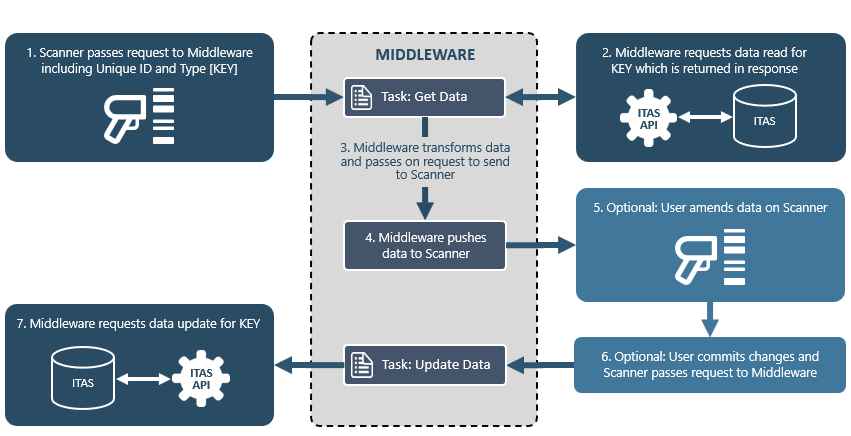CASE STUDY - WORKING WITH BARCODE SCANNERS
A common requirement for customers working with physical stock within a warehouse location, is the ability to identify and track items through ITAS. Although the software does not directly communicate with scanning devices, by providing an API it does allow scanning devices and any proprietary software to request and update information held against stock items. This is achieved through the adoption of 2D Barcode symbology such as QR-Codes which act as visual encodings of key data that can be used to identify ITAS records.
For the workflow sample below it is assumed one of the following scenarios will apply. In either case it is assumed the 2D Barcode has been generated and fixed to the stock item.
Scenario 1
A Warehouse Management System (WMS) is used to monitor stock movements and manufacturing processes. Portable scanning devices are commonly integrated directly to manage activities exposed by the WMS. These activities can include generating 2D Barcodes for labelling stock items and for this scenario the data encoded will be a unique identifier for the associated record in ITAS.
Scenario 2
A portable scanning device is operated independently and has its own proprietary software for handling communications / data transfer. In this scenario it is likely that the 2D Barcodes will be generated by ITAS on-demand. This can be achieved through DOCDES and the development of custom rules that will extract nominated data, encode and can then be printed.
Workflow Sample
Figure 1 shows a typical workflow driven by a portable scanning device. As described above, the 2D Barcodes will contain the key information needed to make the API call when either requiring data to be presented to the operator, or presenting data for updates in ITAS.
In all situations the workflow is managed through an independent integration platform (middleware) as it is unlikely the portable scanning device will be able to directly communicate with ITAS and vice versa.



